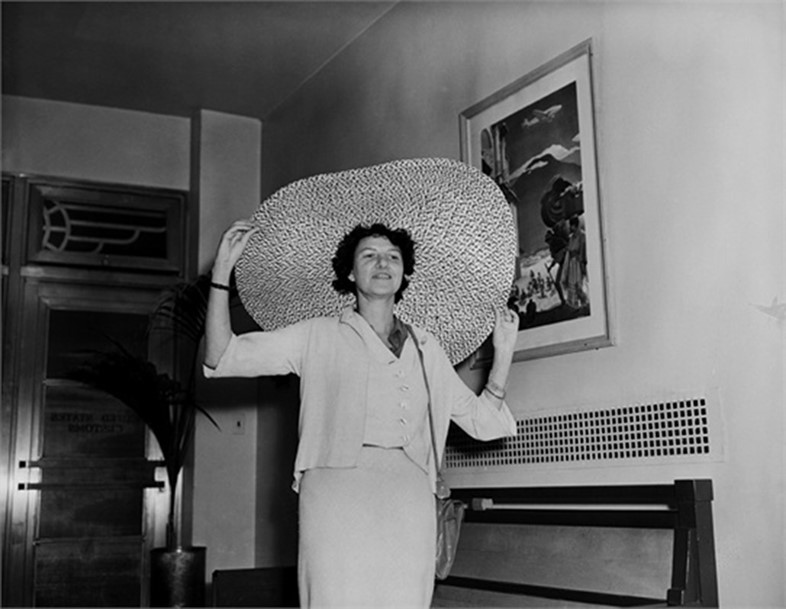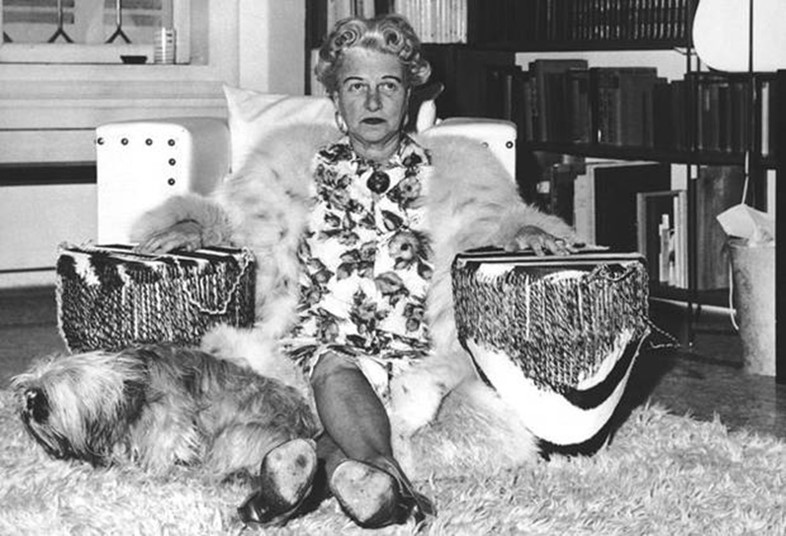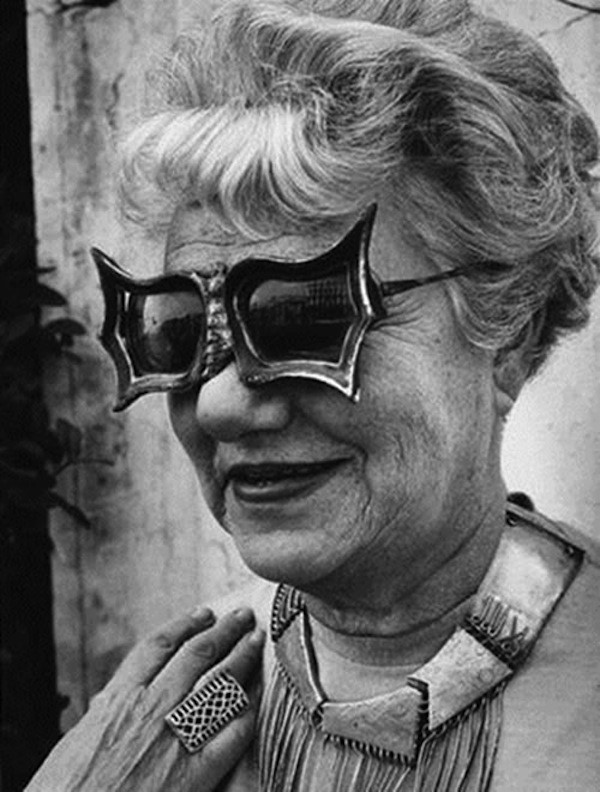A celebration of the inimitable art collector's life and style
“We’ve dressed in our best, and are prepared to go down like gentleman,” were the parting words of Peggy Guggenheim’s father on deck of the Titanic. Peggy, aged 14 at the time, would go on, for better or for worse, to be one of the most notorious figures of the twentieth century: a devotee to Surrealism and a crusader for the beau monde, she amassed one of the world’s most notable collections of modern day art. She knew Jackson Pollock as a carpenter, Samuel Beckett as a secretary and bought Berenice Abbott his first camera.
Guggenheim was haunted by a lonely and suppressive childhood and suffered great insecurities, often using her wealth and wardrobe as a shield. An extravagant flapper, she was famously photographed by Man Ray in a oriental Poiret dress, worn with a hairband given to her by Stravinsky's girlfriend. Other favourites included an Elsa Schaparelli cellophane zipper, a black and gold Ken Scott dress and a collection of tricorn hats and ethnic jewellery.

Her clothing reflected her state of mind. On wearing two mismatched earrings, she declared: "I wore one of my (Yves) Tanguy earrings and one made by [Alexander] Calder in order to show my impartiality between Surrealist and Abstract Art." When first husband Laurence discovered her infidelity on a skiing trip in Switzerland, he found her drunk with a lipstick red-cross marked on each cheek. "She was remarkably ugly," the painter Jean Helion would comment, "in such a pleasant way."
"Like her choice in art, her style was avant-garde and daring – she wore flamboyant earrings and illustrative eye make-up, most often covered by her iconic butterfly glasses"
Like her choice in art, her style was avant-garde and daring – she wore flamboyant earrings and illustrative eye make-up, most often covered by her iconic butterfly glasses, designed for her by Edward Malcarth in 1966. As a teenager she assisted in a bookshop, where she would sweep floors wearing pearl necklaces and a fur coat.

Guggenheim was an exhibitionist. Sexually, it is claimed she had close to one thousand liaisons, controversially including most artists that she supported. She married twice: Dada sculpturist Laurence Vali, an abusive alcoholic known to hold her head under water and rub jam into her hair; “he particularly enjoyed throwing my shoes out of the window and attacking chandeliers,” Peggy recalled. Violence was a common thread within her relationships: long-term lover John Holms, a Scottish writer and alcoholic, would make her stand naked in front of an open window while he threw whiskey in her eyes. Her second husband was Max Ernst. She rescued Max and his paintings from the Nazis but their marriage was short-lived, and he left her after five years of turbulent marriage and infidelity.
A botched nose job at 21 left her with what would be referred to as the "Guggenheim potato". Painter Theodore Stamos would call it "an eggplant," while John Holms would tell her, "I would like to beat your face so that no man will ever look at it again." Jackson Pollock famously said that “To f*ck her, you'd have to put a towel over her head. And she did want f*cking.”

Like so many of her kind, Peggy was as extravagant as she was tragic. Tortured and exploited, she eventually settled in Venice in 1949, where she spent the remainder of her life exhibiting her treasures. She died aged 81, her Venetian palace by then a ruin, muddy and overgrown with leaking holes.
She too, dressed in her best, echoed an end somewhat similar to her father’s.
Suggested reading: Art Lover: A Biography of Peggy Guggenheim by Anton Gil.
